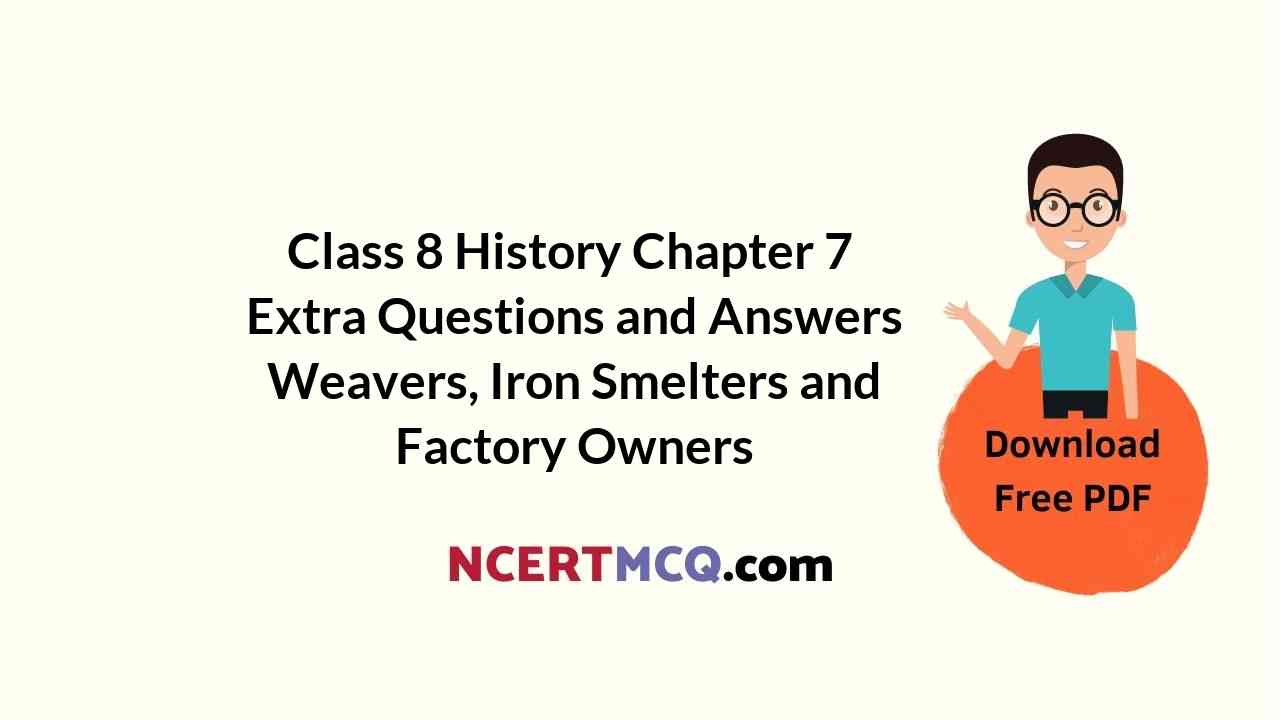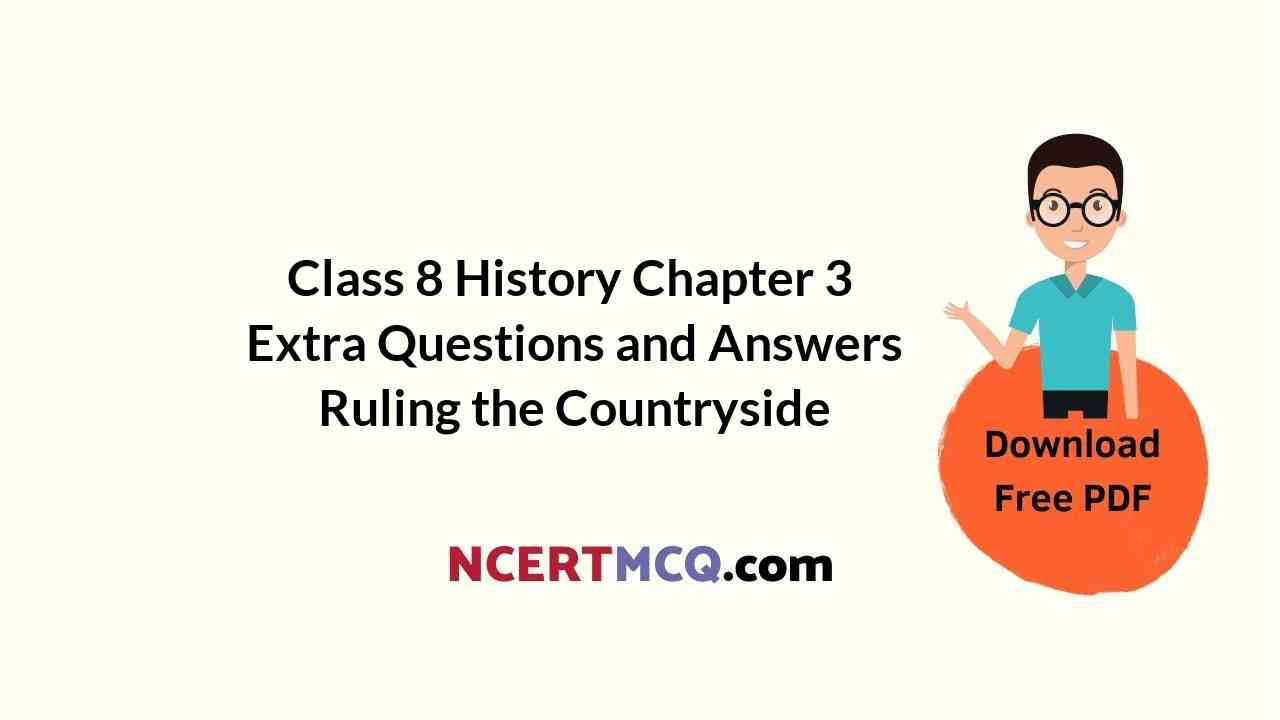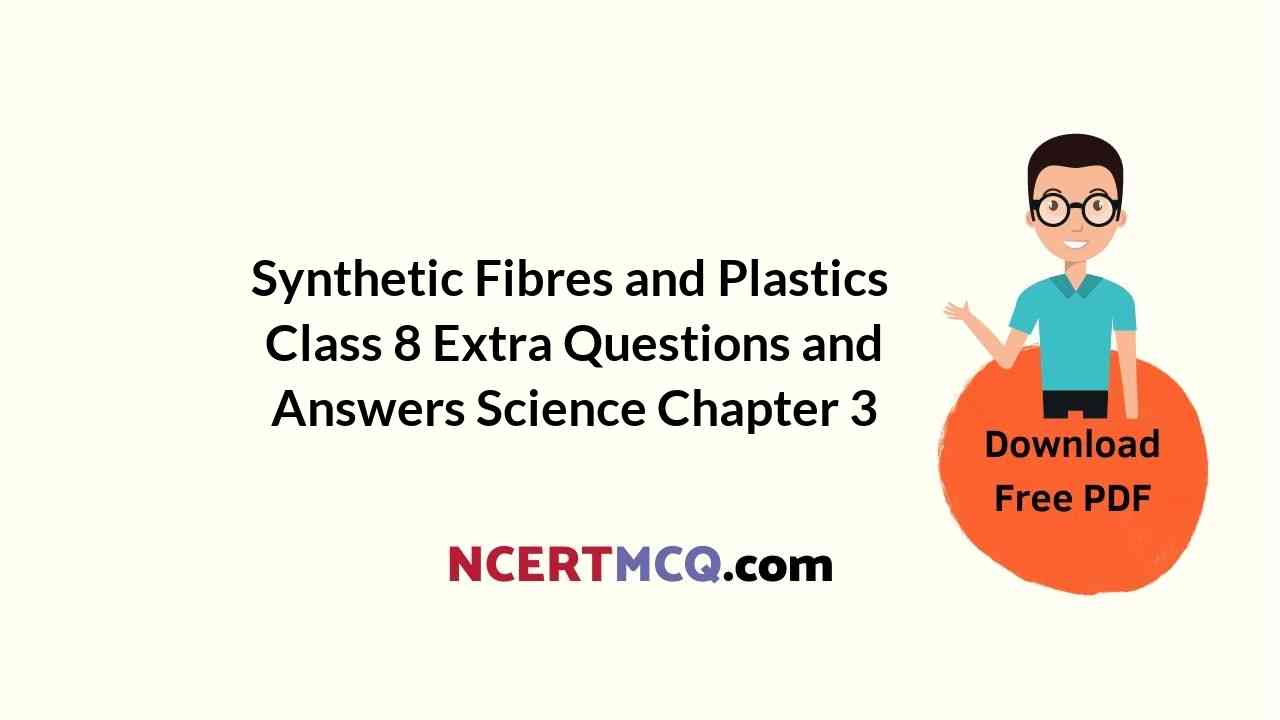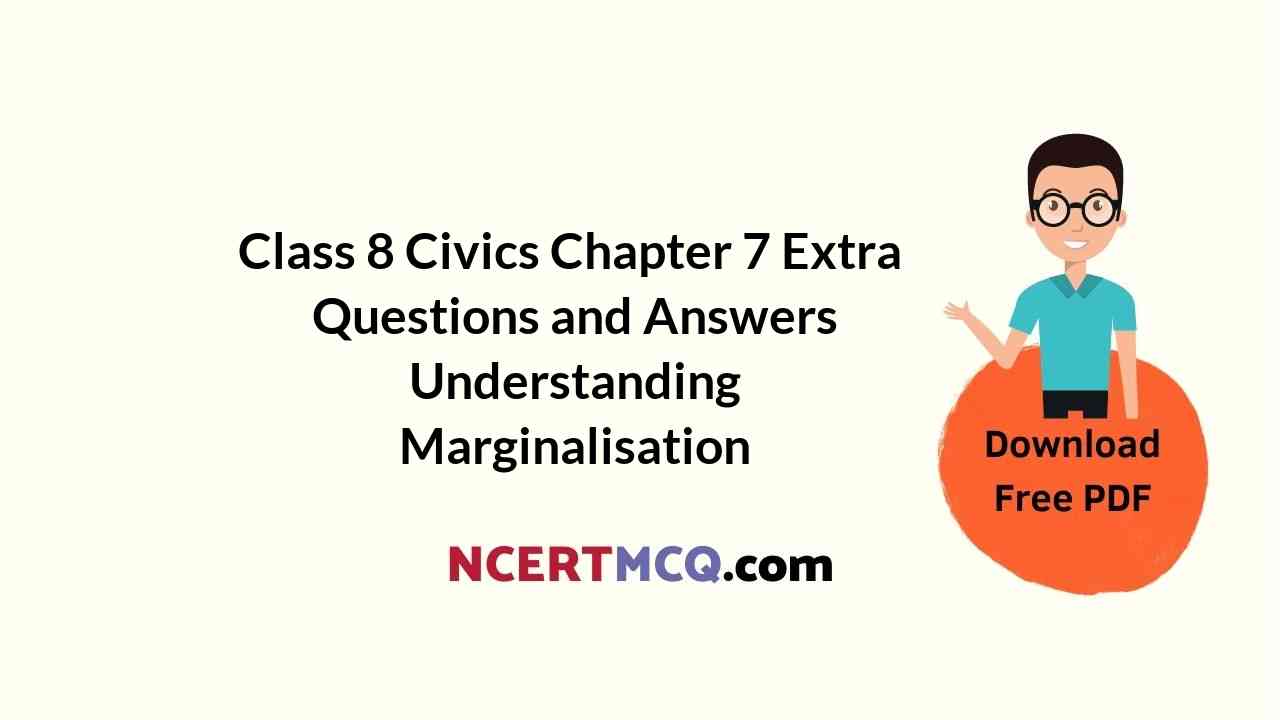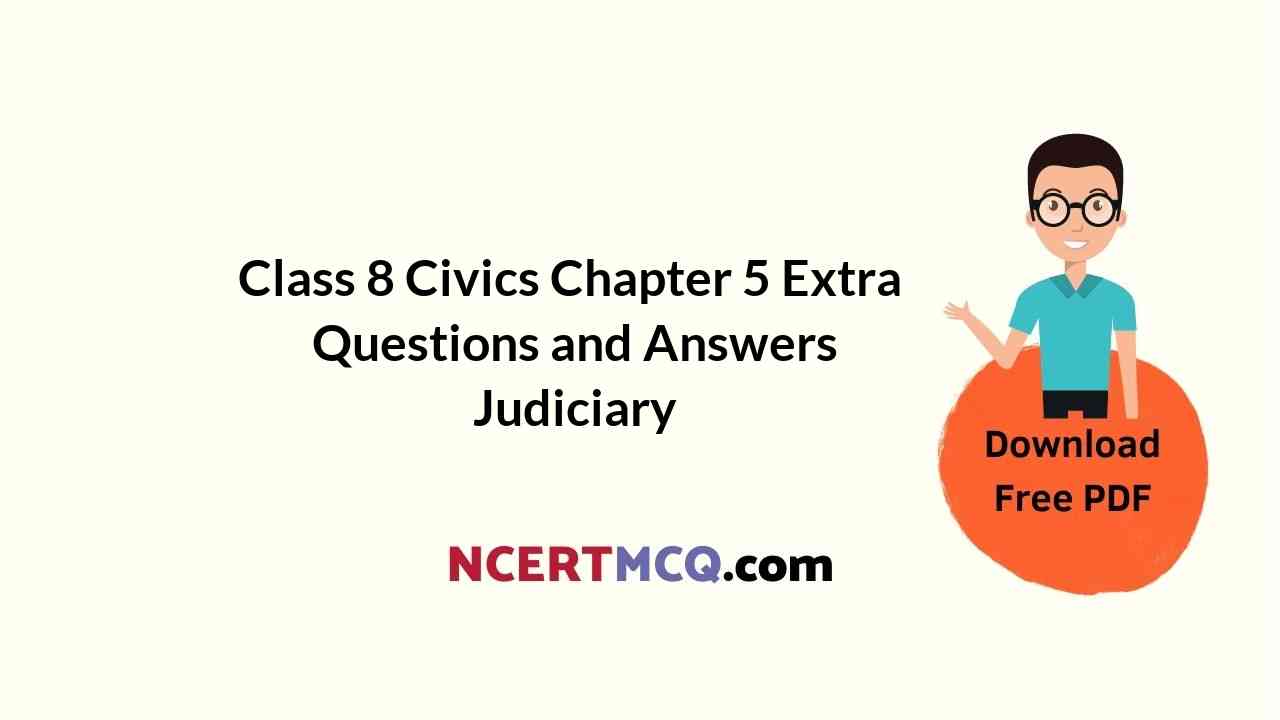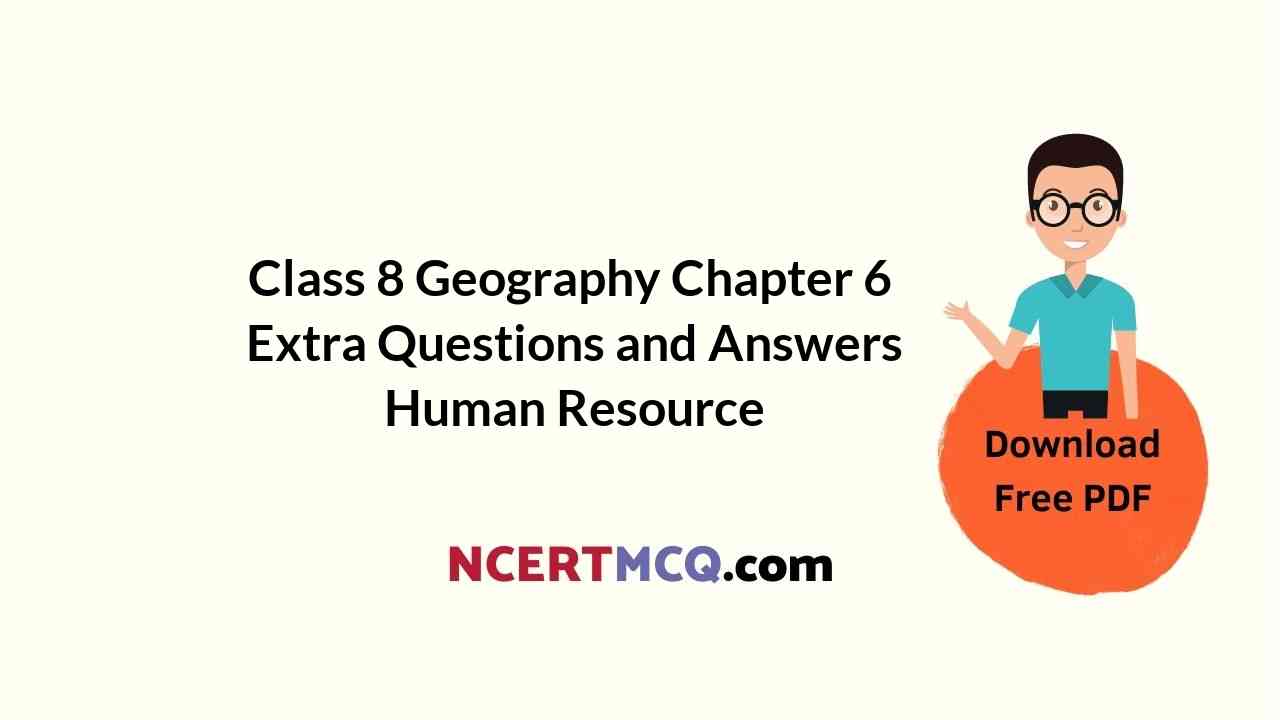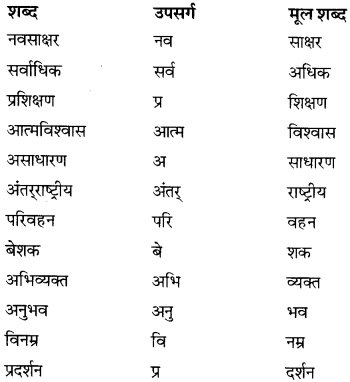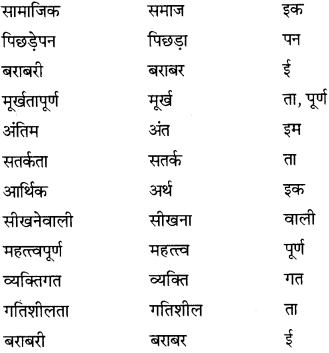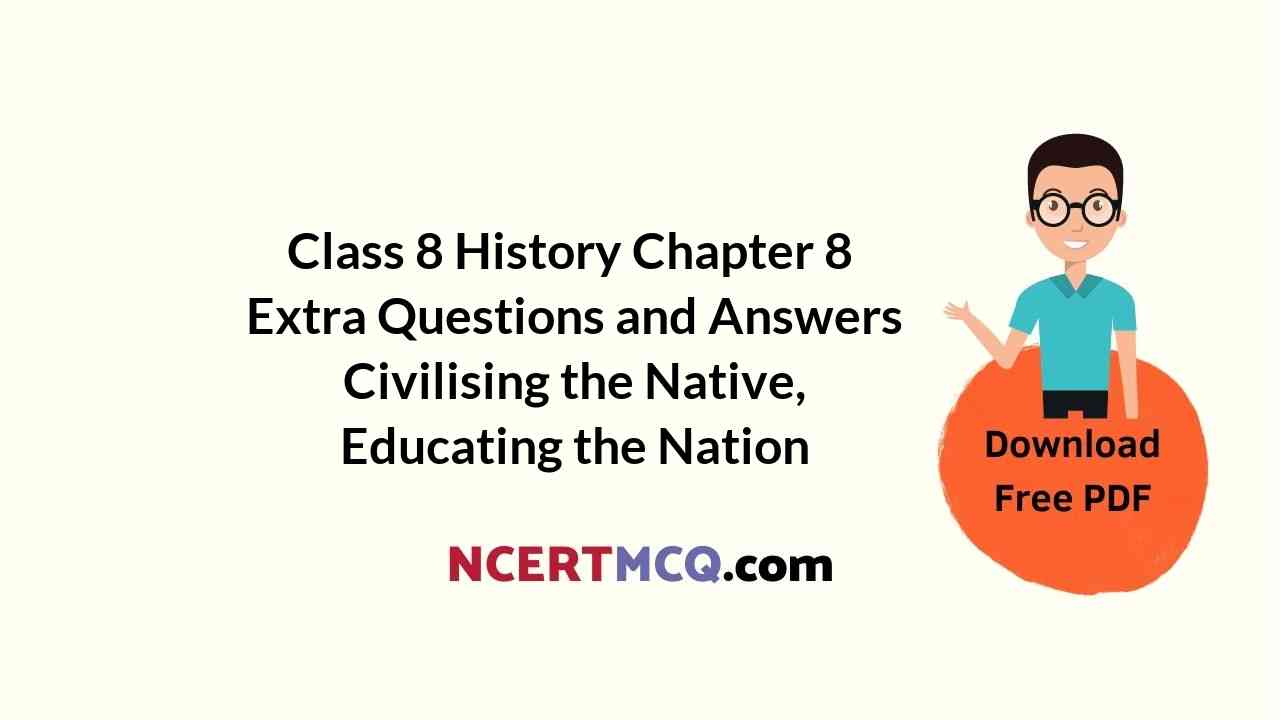Here we are providing Online Education for Class 8 History Chapter 7 Extra Questions and Answers Weavers, Iron Smelters and Factory Owners was designed by subject expert teachers. https://ncertmcq.com/class-8-history-chapter-7-extra-questions/
Online Education for Weavers, Iron Smelters and Factory Owners Class 8 Extra Questions History Chapter 7
Question 1.
What was the cultural mission of the British in India?
Answer:
They wanted to civilise the natives by changing their customs and values.
Question 2.
Who set up Asiatic Society of Bengal?
Or
Who started a journal called Asiatic Researchers?
Answer:
- William Jones;
- Henry Thomas Colebrooke; and
- Nathaniel Halhed.
Question 3.
When was English Education Act introduced?
Answer:
In 1835.
Question 4.
What were seen as “temples of darkness” after the English Education Act of 1835?
Answer:
Oriental institutions like the Calcutta Madrasa and Benaras Sanskrit College.
Question 5.
Where was the missionaries set up a mission?
Answer:
The missionaries set up a mission at Serampore in an area under the control of the Danish East India Company.
![]()
Question 6.
Who reported the East India Company on the progress of education in Vernacular schools in 1830s?
Answer:
William Adam, a Scottish missionary.
Question 7.
Who was William Jones?
Answer:
William Jones was a junior judge at the Supreme Court that the company had set up. In addition to being an expert in law, he was a linguist.
Question 8.
What do you mean by “Wood’s Despatch”?
Answer:
In 1854, the Court of Directors of the East India Company in London sent an educational despatch to the Governor-General in India. Since the Despatch was issued by Charles Wood, it was called Wood’s Despatch.
Question 9.
Why was the argument for practical education criticised by the Christian missionaries in India in the nineteenth century?
Answer:
The missionaries felt that education should attempt to improve the moral character of the people and morality could be improved only through Christian education.
Question 10.
Why was the East India Company opposed to missionary activities in India until 1813?
Answer:
It feared that missionary activities would provoke reaction amongst the local population and make them suspicious of British presence in India.
Question 11.
Why was the British government reluctant to directly support missionary education after 1857?
Answer:
There was a feeling that any strong attack on local customs, practices, beliefs and religious ideas might enrage native opinion.
![]()
Question 12.
What were the motives of the British in India?
Answer:
- The British wanted to control over revenues.
- They wanted territorial conquest.
- As a cultural mission, they wanted to civilise the natives.
- They wanted to change natives’ customs and values.
Question 13.
How, according to the company officials, could the British win a place in the hearts of the natives?
Answer:
- Many company officials argued that the British ought to promote Indian rather than Western Learning Institutions should be set up to encourage the study of ancient Indian texts and teach Sanskrit and Persian.
- Hindus and Muslims ought to be taught what they were already familiar with and what they valued and treasured.
Question 14.
When and why did the British set up a madrasa in Calcutta and Hindu college in Benaras?
Answer:
- A madrasa was set up in Calcutta in 1781 to promote the study of Arabia, Persian and Islamic law.
- Hindu college was established in Benaras in 1791 to encourage the study of ancient Sanskrit texts that would be useful for the administration of the country.
Question 15.
Why did many British officials begin to criticise the Orientalist vision of learning?
Answer:
- They said that knowledge of the East was full of errors and unscientific thought.
- Eastern literature was non-serious and light-hearted. So, they argued that it was wrong on the part of the British to spend so much effort in encouraging the study of Arabic and Sanskrit language and literature.
Question 16.
How, according to Macaulay, could teaching of English be a way of civilising people?
Answer:
- He felt that knowledge of English would allow Indians to read some of the finest literature the world had produced.
- It would make them aware of the developments in western science and philosophy.
Question 17.
How were children taught in pre-British times?
Answer:
- There were small institutions called pathshalas with not more than 20 students each.
- These institutions were set up by wealthy people or the local community. At times they were started by a guru (teacher).
Question 18.
How was the flexible education system in pre-British times suitable for local needs?
Answer:
- Classes were not held during harvest time when rural children often worked in the fields.
- The pathshalas started once again when the crops had been cut and stored. So even children of peasant families could study.
Question 19.
State the main features of Wood’s Despatch in 1854.
Answer:
- It emphasised the practical benefits of a system of European learning as opposed to oriental knowledge.
- It said that European learning would enable Indians to recognise the advantages that flow from the expansion of trade and commerce.
- European ways of life would change their tastes and desires and create a demand for British goods for Indians.
- European learning would improve the moral character of Indians.
- The literature of the East was not only full of grave errors, it could not instil in people a sense of duty and a commitment to work.
Question 20.
What was the impact of Wood’s Despatch on education system of India?
Answer:
- Education departments of the government were set up to extend control over all matters regarding education.
- Steps were taken to establish a system of university education.
- In 1857, in spite of Sepoys Revolt, universities were being established in Calcutta, Madras and Bombay.
- Attempts were also made to bring about changes within the system of school education.
Question 21.
State main features of school education in pre-British times.
Answer:
- There were small institutions, called pathshalas with not more than 20 students each.
- These institutions were set up by wealthy people or the local community. At that times they were started by a guru.
- The system of education were flexible. There was no fixed fee, no printed books, no separate school building, no benches or chairs or blackboards, no annual examinations and no regular timetable.
- Fee depended on the income of parents.
- Teaching was oral and guru decided what to teach.
- The guru interacted separately with groups of children with different levels of leaming.
Question 22.
Explain any five points raised by William Adam in his report about the functioning of ‘Pathshalas in India.
Answer:
- There were small institutions, called pathshalas with not more than 20 students each.
- These institutions were set up by wealthy people or the local community. At that time they were started by a guru.
- The system of education were flexible. There was no fixed fee, no printed book, no separate school building, no benches or chairs or blackboards, no annual examinations and no regular timetable.
- Fee depended on the income of parents.
- Teaching was oral and guru decided what to teach.
- The guru interacted separately with groups of children with different levels of learning.
![]()
Multiple Choice Questions (MCQs)
1. What is not true about William Jones? He was.
(а) a German linguist.
(b) appointed a junior judge at the Supreme Court (at Calcutta).
(c) an expert in law.
(d) known to have studied many languages.
Answer:
(а) a German linguist.
2. What is not true in the following?
(a) Orientalists – Those having scholarly knowledge of Asia’s language and culture.
(6) Munshi – One who can read, write and teach Persian.
(c) Madarsa – A Persian word for a place of learning.
(d) Vernacular – A term generally used to refer to a local language or dialect of everyday use.
Answer:
(c) Madarsa – A Persian word for a place of learning.
3. Which of the following statements is incorrect?
(а) Together with other Englishmen, William Jones set up the Asiatic Society of Bengal in Calcutta.
(b) The Hindu College was set up in Calcutta in 1791 to encourage the study of ancient Sanskrit text.
(c) TB Macaulay, a critic of the Orientalists, saw India as an uncivilised country that needed to be civilised.
(d) Following Macaulay’s minute, the English Education Act of 1835 was introduced.
Answer:
(b) The Hindu College was set up in Calcutta in 1791 to encourage the study of ancient Sanskrit text.
4. Following the 1854 Wood’s Despatch, several measures excluding one in the following, were introduced by the British in India.
(a) Education departments of government were set up in different institutions.
(b) Steps were taken to establish a system of university education.
(c) In 1857, universities were set up in Calcutta, Madras and Bombay.
(d) Attempts were made to change the system of school education completely.
Answer:
(c) In 1857, universities were set up in Calcutta, Madras and Bombay.
![]()
5. What is not true about Rabindranath Tagore in the description given below?
(a) As a child, Tagore hated going to school.
(b) The school appeared like a prison, for he could never do what he felt like doing.
(c) The experience of his school days in Calcutta shaped Tagore’s ideas of education.
(d) He was highly critical of Western Civilisation and its worship of machines and technology.
Answer:
(d) He was highly critical of Western Civilisation and its worship of machines and technology.
Glossary:
→ Linguist – Someone who knows and studies several languages.
→ Madrasa – An Arabic word for a place of learning; any type of school or college.
→ Orientalist – Those with a scholarly knowledge of the language and culture of Asia.
→ Munslsi – A person who can read, write and teach Persian. A term generally used to refer to a local language or dialect as distinct from what is seen as the standard language.
→ English – The language of the imperial masters (Britishers).
